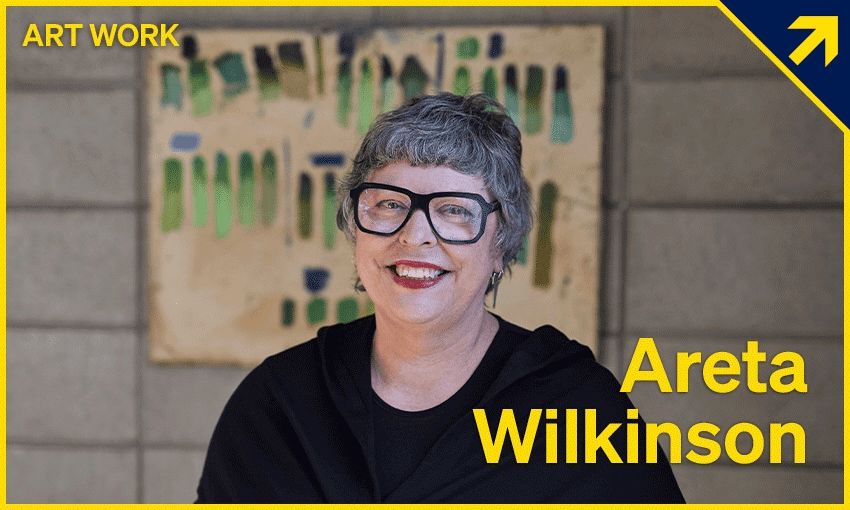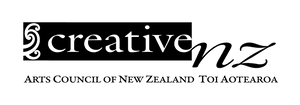Dr Areta Wilkinson’s arts practice investigates contemporary jewellery as a form of knowledge informed by Māori philosophies, especially whakapapa and a Ngāi Tahu worldview. Her work is represented by Auckland Art Gallery Toi o Tāmaki and Te Papa Tongarewa Museum of New Zealand, Wellington. She is an Arts Foundation Laureate, and works collectively with groups including Paemanu: Ngāi Tahu Contemporary Visual Arts and Oxford Gallery toi o Wamakariri.
What she is currently working on
My favourite project is my own artwork – often pushed to the bottom of the list – and my first public sculpture installed at Rolleston Town Centre called Toro Atua, which has come about thanks to Selwyn District Council and SCAPE Public Art.
This month I’ve been in and out of the ENI Engineering factory with my hi-vis and my steel-cap boots on. I’m used to making things myself but with the increase in scale and steel materials the fabricators are creating the works. It has still been hands on though, going in to review the workmanship and directing any fine-tuning. Curvilinear shapes are quite specific.
There’s a lot of comms stuff at the moment so I’m fielding media copy, checking if it makes sense and conducting a few interviews. We’re also planning the big opening to figure out event details and contingencies. Instead of just having a “ribbon cutting” type event by the mayor, we will activate the sculpture with Ngāi Tahu storytelling thanks to performance artist Juanita Hepi, and I’ll catch up with her on site. Ideally we take the audience on a hikoi from one set of sculptures to another to another and tell different parts of the story.
Of course, everything depends on the weather!
What excites her most about her practice
The other major mahi and my latest project, Toru Atua, feels quite exceptional. This project has come out of community aspirations first and foremost. You’ve got Selwyn District Council involved, mana whenua are in there – Ngāi Te Ruahikihiki ki Taumatu who have been working with the council and created a rich cultural narrative for the Rolleston community hub.
This is both exciting and meaningful because it is a great community project – it’s been a long time coming, a lot of people are involved, we’ve had a lot of philanthropy and so much generosity from all the workers. When you’ve got so much goodwill and caring, we really are creating a taonga for the community. This object, this cultural artefact, is a taonga because of all the care and treasuring behind it, and it is hopefully going to last 50 years. There’s a lot of people sitting behind the work, it’s not just me.
That’s a life changing project for me. When you feel like you’re creating a taonga for a whole community.
What an average work day looks like
I’ve just done the vacuuming! Because the Oxford Gallery Artists in Residence are coming to stay, and “in residence” means they stay at our house, because we’re grassroots styles out here.
A tonne of admin, I’d say. I realised about 10 years ago that my art practice was no longer centred on the arts studio. As a descendant of Ngāti Wheke over at Rāpaki, I do have a lot of tentacles and am involved with quite a range of projects on a daily, weekly, and monthly basis. After about two years, I am finally closing in on some major mahi.
Firstly, the recent launch of the Arts Centre Te Matatiki Toi Ora exhibition called Te Waiatatanga o Te Atua on which I was the creative lead, as curator. That involved envisaging a Ngāi Tahu creation narrative recorded by rangatira Matiaha Tiramorehu in 1849, as a counterbalance to the astronomical knowledge practised in the restored working Observatory. Then, tossing out the museum vitrine approach and proposing a more immersive exhibition that progressed through a wānanga process so artists Alex McLeod, Turumeke Harrington, Kate Stevens-West, Christine Harvey and Ariana Tikao could form their ideas as part of a whole.
Sometimes I was a champion for the artists’ vision and sometimes a mediator for the Arts Centre team so everyone could keep progressing. Artists want to tell our stories our way and we need this storytelling to make sense to our communities. That’s the observatory project, which just opened and you have twenty five years to see it.
On a daily basis, I am volunteering at Oxford Gallery toi o Waimakariki, which is opposite our house. I signed up to help seven years ago, and ended up being chair of that trust. That’s dealing with creative tasks, like programming some awesome artists and opportunities to share perspectives and skills with our local community, wearisome grant writing or banal maintenance decisions. Luckily, I’m part of a whole team of generous volunteers activating our local arts centre. We are starting to feel the benefits of our joint mahi, and are lifting the mauri of the place. My work here is largely strategy, administrative and curatorial.
I attend various trust meetings. In those meetings, I’m learning from the other people around the table. I recently joined the Ngāi Tahu Funding Committee towards cultural generation amongst Ngāi Tahu. That’s the best meeting because you’re enabling projects and learning from the collective expertise. Hearing other people’s experience helps inform my other mahi.
I sit on the Waimakariki Public Arts Trust, a council trust for public arts. This is grassroots and mainstream but important to the ecology of arts in our broad region.
I also sit on the Māori Advisory Committee for the Arts Centre Te Matatiki Toi Ora, which is charged with providing mātauranga Māori perspectives. This has been helpful to feeling a part of Ōtautahi Christchurch.
I’m a member of Paemanu: Ngāi Tahu Contemporary Arts, and right now we’re making a collaborative work for the Asia Pacific Triennial at QAGOMA (Queensland Art Gallery). We created a kaupapa and new artwork for this opportunity, but because we are a whānau collective, these decisions are made by consensus. That takes multiple meetings sometimes into the late evening until everyone agrees or goes offline.
There are too many meetings in my life!
What support she has had as an artist that makes it possible for her to do all of this
I have been practising now for 30-plus years and that support has changed over the years. If I go back into the deep past, I came through the tertiary system and had a really supportive tertiary cohort and amazing tutors who continued to keep in contact when I left tertiary as a student. Straight after studying, I got together with emerging artists like myself who had been through the same programme in Auckland and in Dunedin, resulting in a shared studio called Workshop Six still going today.
Later on, the kind of support that was critical came from some awesome champions who got what I was doing and invited me to participate in exhibition projects. They were the kind of opportunities that extended my creative vocabulary and my relationships, like within Ngāi Tahu and the art sector. This helped me extend my audience, to include contemporary jewellery and contemporary art audiences.
In summary? Colleagues and champions. I surround myself with positive people!
How her research feeds into her arts practice
Research and research questions have been critical to articulating an arts practice that aims to belong to Te Waipounamu, Aotearoa and nowhere else in the world. The research questions pretty much ask, “How do I do this, what does this look and feel like, who is it for, does it make sense to my communities?” The creative process is used to unpack those questions and it’s an ongoing lifetime exploration.
How do you think about the art that is located here? For me, that meant unpacking some of my own whakapapa, knowledge and methodologies from here. It meant living down in Te Waipounamu, being informed by the geological and cultural landscape, and letting that shape my perspective.
Learning mātauranga Ngāi Tahu, whether that be narratives, food gathering, walking trails or anything – it is so rich. Then processing such experiences as an artist – that’s the kind of research I’m talking about. Also participating by being part of communities and making contribution to enable others. So you’re not just taking but returning knowledge. That’s a key value in Te Ao Māori. You’re contributing as well.
What would make her continued career as an artist easier
I’m more interested in the bigger picture, how creative practices bring added value to our lives and how they can be bolstered for the benefit of communities. I have a better understanding of what scaffolding can help support the creative industries and I can see the disparity of local government approaches – just by driving from one district to another. All local government are not the same – some are really excelling in terms of the creative sector, and some aren’t.
What I would really, really love is some of our government departments and funding agencies to host wānanga with teams from local government. Then for this knowledge to be disseminated to regional groups. We know how the arts bring added value to the wellbeing economy, and so I’d like to see wānanga examining the value of the creative industries in the regions, provided the data so locals can see there’s a whole economy there that they’re missing out on, but also provide helpful strategies (and purse) to actively pursue and create opportunities for arts projects – especially for arts integration to enhance regional identity.
If local government would take the arts seriously and be given more tools and resources to implement art strategies, then man, we’d be really cooking with gas, I reckon.

